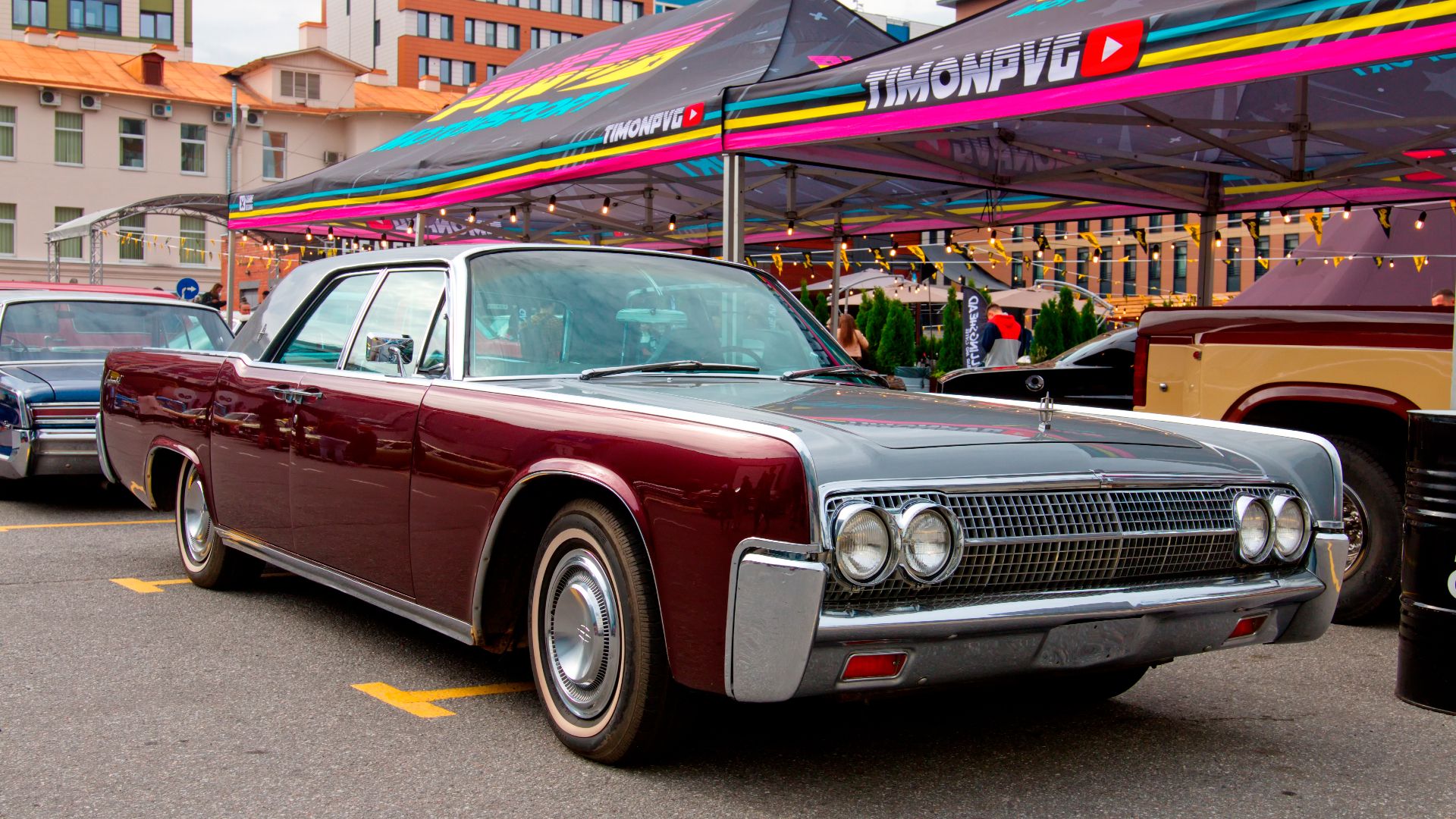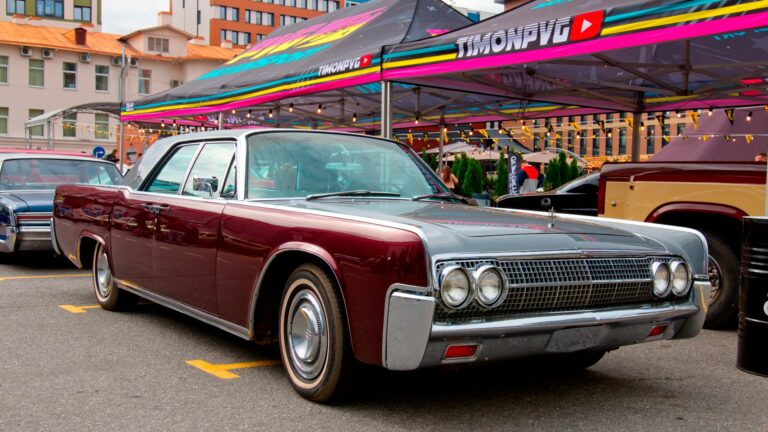Lincoln’s Ambition: The Mark X Concept
The Lincoln brand currently occupies an intriguing space in the automotive market. While sales figures in 2024 showed a healthy increase of 28.1 percent over the previous year, the brand’s current SUV lineup – including the Corsair, Nautilus, Aviator, and Navigator – lacks the exciting flair of some of its iconic predecessors. The brand has a rich history that includes some truly memorable models, such as the fourth-generation Continental with coach doors from 1961 to 1969. This model is perhaps best known as the vehicle President John F. Kennedy was riding in during his assassination.
In 2004, Lincoln presented a concept car that looked to the past while designing for the future: the Mark X. This retro-modern roadster took inspiration from the brand’s classic designs, hoping to introduce a fresh approach to the luxury brand’s styling. This design was heavily influenced by the Ford Thunderbird roadster platform of the time.

A Vision of the Future
The Lincoln Mark X concept made its debut at the 2004 North American International Auto Show in Detroit. The two-seater roadster, showcasing a chiseled design, was the product of celebrated automotive designer Marek Reichman, who is currently the Chief Creative Officer at Aston Martin. His impressive resume includes work on models such as the Aston Martin Vantage S, Vanquish Volante, Rapide S, Vulcan, and DB11.
Reichman stated that the goal was to ensure that every aspect of the Mark X was effortless and smooth. Every feature had the intention to be simple to interact with.
The Mark X features a polished aluminum egg-crate grille with bracket-shaped headlights. The brand’s signature star-shaped hood ornament is positioned prominently on the nose, a nod to Lincoln’s heritage. The concept’s profile, borrowing cues from the fourth-generation Continental, features flush-mounted, polished aluminum door handles. The one-piece door hinges move forward to increase the door opening, making entry and exit easier for passengers.
The roadster’s 12-spoke, 19-inch wheels showcase a mixture of polished and machined details to accent the vehicle’s profile. But it’s the roof that makes the Mark X stand out. Featuring a large glass panel, the design allowed natural light to flood the cabin, even when the roof was in place, providing a convertible-like experience. The roof could retract in under 30 seconds.
The rear of the Mark X incorporates a boat-tail design with thin horizontal taillights. The rear deck contains two separate panels. One hides the retracted roof, and the other provides 14.8 cubic feet of storage space within a leather-lined trunk. Trapezoidal exhaust pipes are built into the bumper.
The exterior of the Mark X displays the color-shifting Atlantic Pearl paint. Depending on how the light hits the body, the paint can take on a cool blue tone or appear brighter when exposed directly to sunlight. A chrome strip running along the beltline added further shine to the striking lines of the car.
Reichman described the Mark X as a pure, integrated design focused on a holistic approach. He believed the model would become a competitor to the best personal luxury convertibles on the market.
The Mark X design was meant to forecast Lincoln’s design language. However, the egg-crate grille was one of the only design elements that transferred to later vehicles such as the third-generation Navigator. The Mark X shares underpinnings with the Ford Thunderbird roadster, both using the same 3.9-liter V-8 engine making 280 horsepower and 286 pound-feet of torque. Power was delivered to the rear wheels through a five-speed automatic gearbox.
Interior Design and Technology
The cabin of the Mark X featured a luxurious interior with Lime Sorbet-colored upholstery. Lincoln used high-end materials such as full-grain leather, polished aluminum, dark chrome, and sheepskin floor coverings to emphasize luxury. Additionally, white Corian trim, known primarily as a kitchen countertop material, shows the design team’s use of unconventional elements.
Reichman noted the importance of comfort and the sensory experience within a luxury car. The Mark X aimed to make a classic feature, such as leather, uniquely modern.
At the time, technology such as dashboard screens was exclusive to high-end models. The Mark X featured a 7.0-inch display on the center stack, controlling the satellite navigation, climate control, and seat memory functions. The controls were operated by a controller and buttons. The instrument panel echoed the style of ‘70s Lincolns and had a modern layout, including separate square binnacles for the speedometer. The driver would grip a multi-function steering wheel wrapped in leather and featuring dark chrome trim. The center console featured ribbed metal louvers to bring the look together.
Tech features included rain-sensing windshield wipers, an automatic-dimming rearview mirror, a six-speaker THX-certified stereo system with automatic volume adjustment, and dual-zone automatic climate control, all state-of-the-art for the early 2000s.
What Could Have Been?
The Lincoln Mark X’s future remains a question. The Ford Thunderbird, sharing the same underpinnings, didn’t find commercial success, and its production only lasted from 2002 to 2005. However, the Mark X’s unique retractable glass roof could have set it apart in the marketplace. At the time, it could have offered features comparable to models like the Mercedes-Benz SL-Class and the 996-generation Porsche 911 Carrera Targa, potentially at a lower price.
The automotive industry has changed considerably since the Mark X’s 2004 debut. Today, Lincoln has no traditional car in its lineup, and certainly no two-seat luxury roadsters. Instead, the brand focuses on SUVs.
Other Standouts from the 2004 NAIAS
The 2004 NAIAS also saw the unveiling of the Chrysler ME Four Twelve supercar concept, the road-going Ford GT, the fifth-generation Mustang, and the Shelby Cobra Prototype concept, as well as the Bronco Design Study concept,. Chevrolet introduced the sixth-generation Corvette, while European auto fans were able to see the Ferrari 612 Scaglietti for the first time. Honda’s HSC concept gave them a vision of a very different NSX successor.



